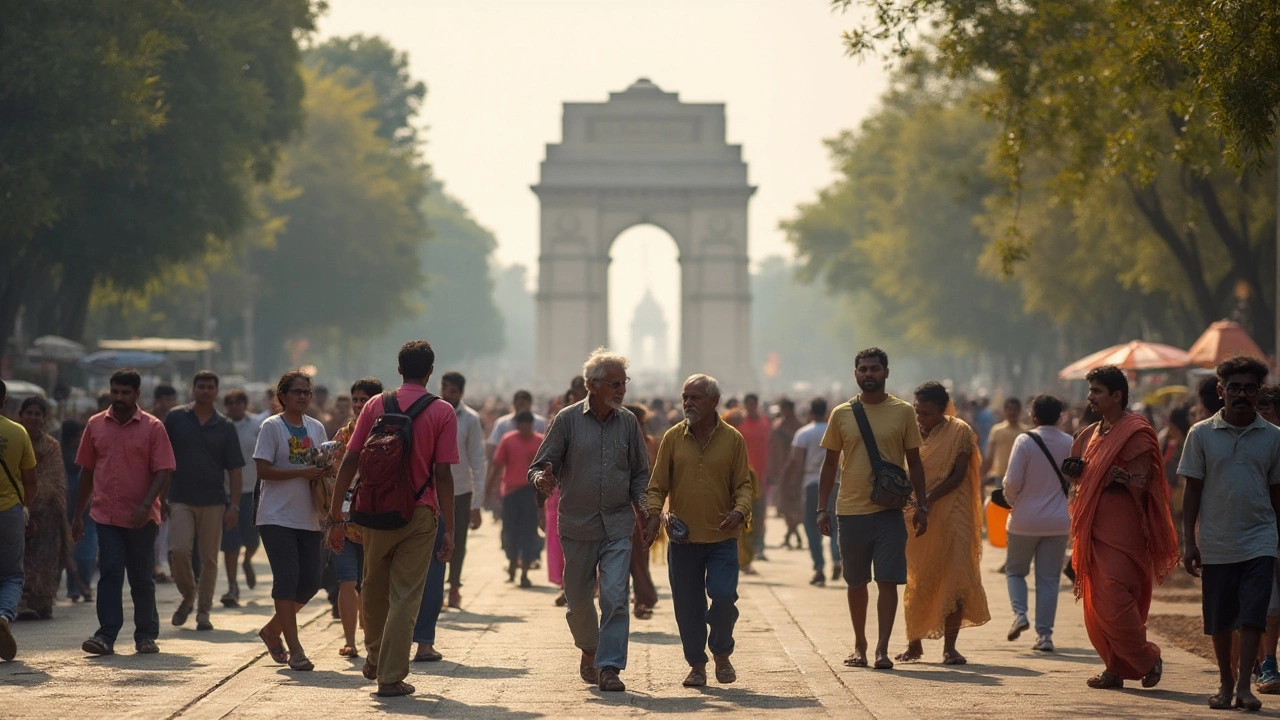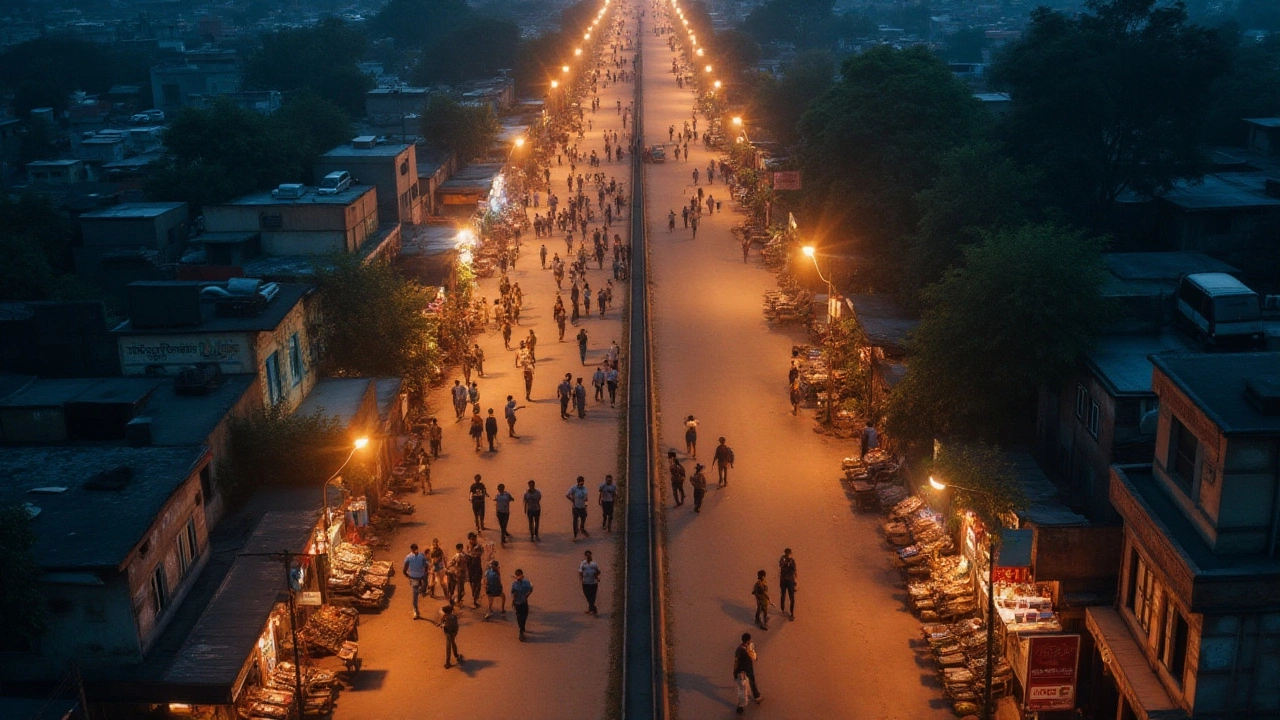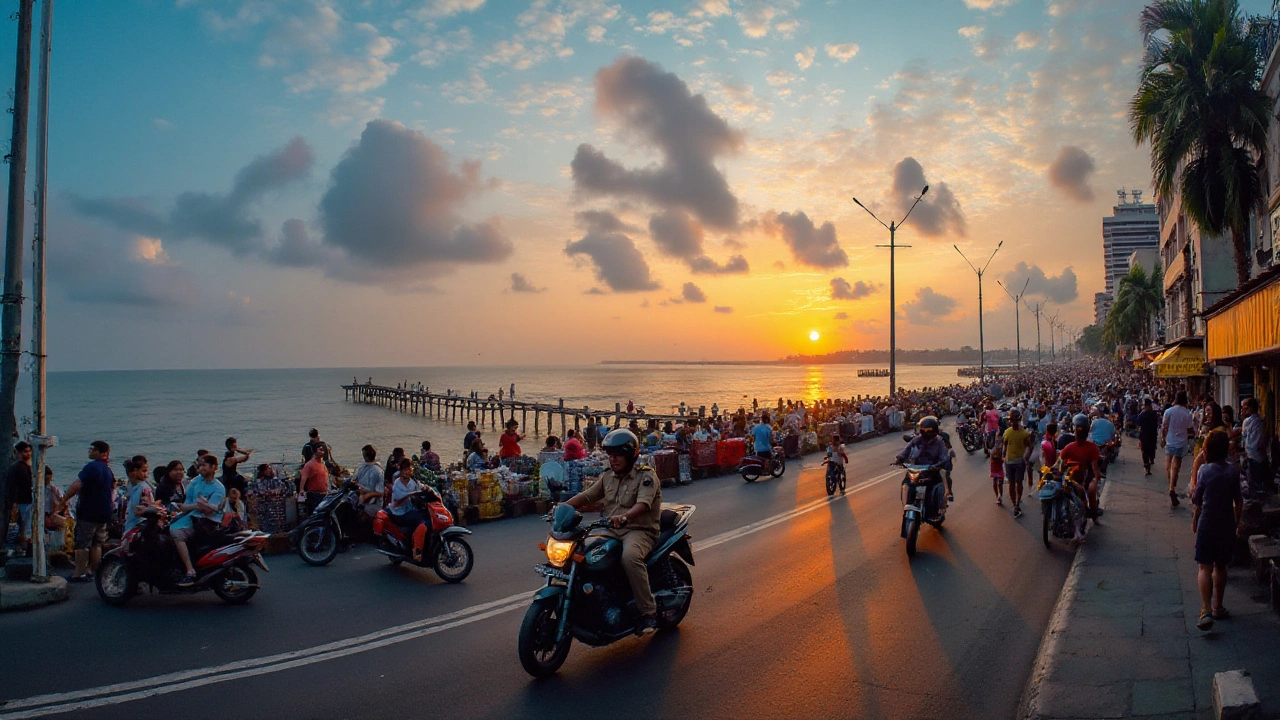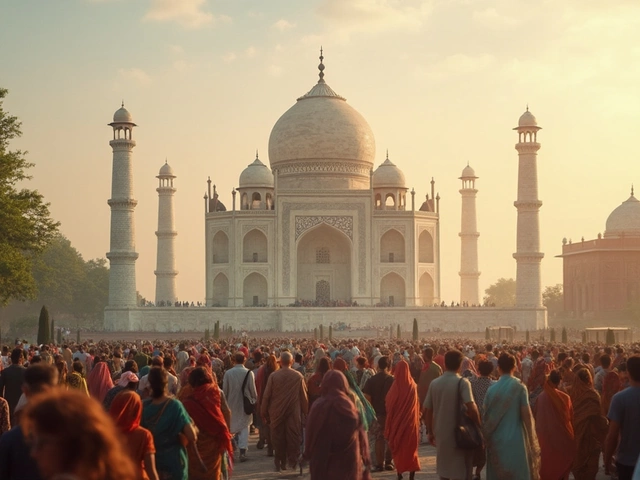When planning a visit to India, a frequently asked question is which city is safer — Mumbai or Delhi? Both cities are vibrant hubs of culture and history, each offering its own unique charm. However, they also come with their distinct safety challenges. Through this article, we'll uncover the nuances of safety in India's two largest metropolises.
Travelers often hear mixed stories about Mumbai and Delhi. While no place is entirely free of risks, understanding the specific concerns in each locale can turn an anxious trip into a journey of inspiring discovery. Whether it's navigating crowded streets or choosing safe accommodation, having accurate information is key.
This exploration into safety looks beyond mere statistics. We factor in the human element, the stories from local residents, and the experiences of fellow travelers. Our goal is to guide you through the maze with tips and insights that ensure your adventure is as safe as it is memorable.
- Historical Context of Safety
- Crime Statistics and Trends
- Neighborhood Watch: Safe vs. Unsafe Areas
- Public Transportation and Safety
- Cultural Dynamics and Perceptions
- Practical Safety Tips for Travelers
Historical Context of Safety
Safety in cities like Mumbai and Delhi has always been a dynamic concept, deeply rooted in their complex histories. Mumbai, famously known as Bombay until 1995, has a legacy woven with threads of diversity and migration. The city evolved as a major port, attracting merchants, businessmen, and artisans from various walks of life. This influx has played a role in shaping a cultural mosaic characterized by vibrant trade but also occasional unrest. Over the years, crime rates in Mumbai have seen fluctuations as rapid urbanization brought challenges, from slum development to organized crime. Yet, the city has consistently fostered a reputation for being cosmopolitan and industrious.
Conversely, Delhi, with its deep ancient roots, has been the seat of various empires like the Mughals, each leaving a profound impact on its socio-political landscape. Being the capital city, Delhi has been at the crossroads of power and politics, experiences sometimes mirrored in the city’s safety record. The political climate has often affected public perception and reality of safety, with periodic outbreaks of violence impacting both locals and tourists.
As modern-day concerns arise, both cities have implemented measures to enhance security, particularly for tourists. In Mumbai, community policing has been a popular strategy, leveraging the city’s interconnected nature to promote vigilance. Delhi, on the other hand, has invested in technology-driven solutions like increased CCTV surveillance in metro areas. While these efforts aim to provide security, travelers should still exercise caution, informed by the unique historical context each city presents.
In terms of crime statistics, Delhi has traditionally reported higher crime rates as compared to Mumbai. According to reports, theft and burglary dominate the crime portfolio in Delhi, impacting the confidence of travelers in some regions. Nevertheless, Mumbai too faces its challenges, particularly in densely populated zones, and both cities are part of India’s broader narrative of striving for safer public spaces.
Despite these obstacles, both Mumbai and Delhi demonstrate resilience, perpetually working toward their goals of being safer urban centers for all residents. As the cities continue to modernize, the historical contexts provide a backdrop that is as crucial to understand today as ever. As reinforced by influential travel writer Pico Iyer,
"Travel is the best way we have of rescuing the humanity of places, and saving them from abstraction and ideology."
Crime Statistics and Trends
Crime rates and their trends are crucial for understanding safety in any city, especially in megacities like Mumbai and Delhi. Mumbai, often referred to as the city of dreams, has a reputation for being safer compared to Delhi. This perception is partially grounded in numbers, with Mumbai traditionally reporting fewer violent crimes. According to the National Crime Records Bureau of India, the crime rate per capita in Mumbai is lower than Delhi. However, both cities saw a fluctuating trajectory in different crime categories over the years, influenced by numerous sociopolitical factors.
The distinction in crime trends often relates to how each city approaches law enforcement and urban development. In Mumbai, crimes such as theft and burglary have shown different patterns, often clustered around urban poverty pockets. On the contrary, Delhi has witnessed an escalated number of crimes against women, prompting discussions on policing and public safety measures. In remarkable initiatives, both cities have augmented their police force numbers and introduced more women-centric safety programs. Strategies like mobile-based emergency services and increased street lighting have been implemented to curb crimes and promote a sense of security.
Interestingly, when it comes to cybercrime, both Mumbai and Delhi have noticed a surge. This mirrors a larger global trend where urbanites spend more time online, increasing their vulnerability. India tourism typically highlights such safety challenges, urging travelers to remain vigilant digitally as much as physically. As per recent releases, Mumbai fared better in terms of coping with cyber threats compared to Delhi, but the gap narrows each year as both police forces enhance their digital forensics capabilities.
In light of rising concerns, city administrations have responded with numerous safety initiatives. For instance, numerous surveillance cameras have been added in key areas of both metropolises, supported by facial recognition software. Public transport facilities are subject to enhanced scrutiny, with dedicated law enforcement officers patrolling regularly. While these measures garnished positive feedback from locals and tourists alike, there remains an ever-present need to improve and adapt in tandem with crime patterns.
The Times of India once quoted a senior Mumbai police official stating, "Our foremost duty is the preservation of public safety to ensure that every resident and traveler feels secure within Mumbai's sprawling corridors."
Recent trends, however, tell a story of resilience and innovation in crime management. Both cities boast of citizen-driven initiatives thriving on community policing models. From neighborhood watch programs to apps designed for real-time crime reporting, Mumbai and Delhi stand as testaments to human ingenuity in the face of urban safety challenges. These participatory safety models have not only enhanced trust among residents but also between citizens and law enforcement agencies. Such mutual cooperation further scales the effectiveness of traditional methods, making cities safer, incrementally if not drastically.
While crime statistics offer just one window into the complex layers of safety, they remain indispensable for crafting comprehensive travel advisories. Keeping an eye on official reports and local news can arm potential travelers with knowledge. Thus, whether stepping out into the bustling streets of Delhi or savoring the coastal breeze in Mumbai, being informed and proactive always goes a long way in shaping a secure travel experience.

Neighborhood Watch: Safe vs. Unsafe Areas
Understanding the distinction between safe and unsafe areas is crucial when roaming through the sprawling cities of Mumbai and Delhi. Both cities boast neighborhoods that are almost synonymous with safety, while others require a bit more caution. In Mumbai, the upscale residential districts such as Colaba, Bandra, and Juhu are generally considered safe havens for tourists and locals alike. These areas offer a pleasant walking experience with well-lit streets and bustling local businesses that foster a sense of community security. Their proximity to city attractions makes them ideal locations for setting up a base during your stay.
Meanwhile, in Delhi, areas such as South Delhi, including localities like Hauz Khas and Saket, are recognized for their relative safety. These neighborhoods are home to both affluent residents and expatriates, making them tourist-friendly due to the vibrant mix of diversity and cultural engagement. Public spaces are regularly bustling with activity, offering a degree of inherent security due to the constant vigilance of crowds. However, as is the case with any gigantic urban hive, caution should still be a traveller's constant companion.
However, it's important to understand that safety in cities like Mumbai and Delhi can be highly situational. In contrast to those more secure areas, there are localities which are advised against for unacquainted travelers. In Mumbai, neighborhoods like Dharavi and parts of Central Mumbai are seen as less safe, especially after dark. In Delhi, regions such as Paharganj, while popular among backpackers for its affordable accommodations, often reports higher instances of petty crimes.
For those inclined towards data, the disparities between these neighborhoods can be illustrated through statistics related to crime rate, law enforcement presence, and responsiveness. Traits like density of streetlights, public transportation coverage, and nighttime commercial activity significantly impact one’s perception and reality of safety in these cities. Studies show that areas with higher commercial activity and mixed-use environments tend to have lower crime rates, due to the uninterrupted foot traffic.
"The lived experiences of a traveler often reflect the preparedness and awareness we carry along, more than the absolute safety index of a place." - A seasoned travel journalist.
When navigating such a nuanced landscape, travelers are advised to blend local knowledge with their own research. Befriending locals, or engaging with social media communities focused on travel safety, can offer personalized insights into current conditions. Additionally, local police apps and tourist helplines can be vital tools in quickly accessing assistance or real-time updates on safety scenarios.
To encapsulate the safety landscape, foresight and precaution are the traveller’s strongest allies. By staying informed and remaining vigilant, visitors can enjoy the multifaceted marvels of India's principal cities, ensuring that their experiences are imbued with wonder rather than worry.
Public Transportation and Safety
Public transportation is a lifeline for both Mumbai and Delhi, bustling with millions of commuters every day. This sheer volume makes it crucial for travelers to navigate these systems with a sharp eye on safety. In **Mumbai**, the local trains are often referred to as the 'nervous system' of the city, tirelessly moving its citizens across the complex cityscape. Known for its crowded peak hours, the local train network is efficient yet demanding for those unfamiliar. Safety begins with awareness; knowing when to travel can make a difference. Early mornings and late evenings might see fewer crowds, but they also flag safety concerns due to fewer people around, making alertness critical.
**Delhi**, on the other hand, boasts the expansive and modern Delhi Metro. This system is a testament to progress, being relatively new and better managed in terms of crowd control and security measures. However, the city isn’t devoid of its pitfalls. Overcrowding is still a reality during peak hours and caution is advised when using less busy stations, especially in the dim hours of the day. The metro has robust measures in place, like CCTV surveillance and police presence, to keep potential threats in check. Travelers are advised to keep their belongings close and stay vigilant, particularly against petty theft.
For those preferring road travel, both cities operate extensive bus networks and ride-share options, including taxis and auto-rickshaws. While registered ride shares offer a safer alternative by providing data tracking and accountable driver conduct, **Mumbai** buses can be challenging due to erratic schedules and overcrowding. **Delhi** buses have improved with the introduction of low-floor options, but one must still keep an eye on personal belongings. Interestingly, a quote by a local travel expert reflects the importance of awareness:
“In cities like Mumbai and Delhi, your sense of awareness is your best defense. It's about intuiting the flow and keeping abreast with the rhythm of daily commuters.”
Statistically, both cities have made strides in bolstering transport safety, yet challenges remain. To aid in a clearer understanding, here is a comparison of crime rates affecting public transportation in each city:
| City | Incidents per Year | Common Issues |
|---|---|---|
| Mumbai | 800+ | Purse snatching, overcrowding |
| Delhi | 1000+ | Theft, harassment |
Relying on public transportation doesn’t only save time and costs but immerses you in the city’s authentic pulse. However, irrespective of the mode you choose, a blend of sensible precautions and local knowledge ensures that your journey through **India’s** heartlands is as safe as it is enlightening.

Cultural Dynamics and Perceptions
When we talk about the cultural dynamics of Mumbai and Delhi, we're diving into a vast ocean of diversity, stories, and experiences that shape perceptions in these mega-cities. First, let's set the scene with Mumbai, often hailed as the entertainment capital of India. Here, safety and city culture intertwine in vibrant ways. Bollywood churns out movies that echo the city's beating heart, creating an atmosphere where dreams seem within reach even amid chaotic urban life. The city's pace calls for awareness; understanding cultural etiquette can sometimes bridge the gap between tourist and local. One fascinating aspect is the linguistic dance of Mumbai's streets—where Hindi, Marathi, English, and Gujarati intermingle freely, fostering a strong local bond that often extends warmth to tourists.
Delhi, on the other hand, offers a contrasting palette of cultural hues. It's where ancient history and modernity collide, reflected in everything from its historical landmarks to the bustling markets. Perceptions of safety are deeply rooted in cultural behaviors and traditions that go back centuries. Despite media portrayals, the cultural emphasis on 'Atithi Devo Bhava' or ‘Guest is God’ often means that locals go out of their way to aid visitors, adding layers of hospitality to their interactions. There's a palpable sense of pride in the city’s rich heritage, which can be an integral part of a tourist's experience. Delving deeper, one encounters the juxtaposition of regal Mughal architecture with fast-paced urban development, a testament to Delhi’s evolving spirit.
Observing how these cities celebrate festivals gives further insight into their cultural dynamics. In Mumbai, Ganesh Chaturthi transforms the city into a river of processions, color, and rhythm, a sight that visitors find exhilarating yet overwhelming. Delhi's streets come alive during Diwali as the Festival of Lights ignites homes and hearts alike, enveloping the city in warmth and luminosity. Tourists can find safety in numbers during such festivals, though awareness and respect for local customs can make experiences seamless and enjoyable. Interestingly, the variety of festivals observed also underscores the religious diversity and co-existence prevalent in both cities, enriching the cultural tapestry tourists come to explore.
There's a tangible sense of resilience in both Mumbai and Delhi, informed by their historical trials and triumphs. This resilience breeds a certain street-smart quality, which tourists might observe in the busy, sometimes chaotic markets. For instance, shopping in Chandni Chowk or at Colaba Causeway can feel like stepping back in time, standing at the crossroad of history and bustling commerce. Understanding these dynamics can inform tourists about the social interplay and civic responsibilities observed by residents. In both cities, expressing common courtesies, like dressing modestly and maintaining respectful distances, goes a long way in blending safely into the local fabric.
Speaking to local experts also unravels layers of perception travelers might not consider at first glance. As per a Delhi-based cultural historian, "To feel truly safe in Delhi, understand the pulse of the city. It's an unspoken language of social cues. Navigating them with finesse makes all the difference." In both cities, neighborhoods emerge as microcosms reflecting broader societal norms, with gentrified areas often showing palpable hospitality towards tourists.
Finally, an important aspect of cultural dynamics involves understanding the impact of social media on tourist perceptions of safety. Stories and reports shared online can sometimes paint skewed pictures. Critical examination of such narratives can lead travelers to a more balanced view. Social media savvy travelers should engage with local forums and groups online to get firsthand information on current trends and safe practices. Utilizing apps that focus on safe traveler communication can bridge the gaps formed by unfamiliarity, helping tourists to take informed steps while exploring Mumbai or Delhi.
Practical Safety Tips for Travelers
Exploring the bustling streets of India, especially in cities like Mumbai and Delhi, can be exhilarating and nerve-wracking at times. Every city has its own rhythm and knowing how to navigate safely is crucial. A city teeming with people brings both opportunities for a remarkable experience and the occasional brush with danger. One of the most important things to do is to stay aware of your surroundings. Familiarize yourself with local maps before heading out, and try to keep your valuable items, like phones and wallets, out of sight. It's wise to carry a copy of your passport and visa instead of the originals, keeping them safe back at your accommodation.
Residents of these cities often suggest blending in with the crowd as much as possible. Avoid looking too much like a tourist when you venture out. By opting for subtle attire that matches the local style, you can sidestep unwanted attention. Use reputable taxi services or rely on app-based transportation that is commonly used by locals. These services often verify both the driver and the vehicle, adding an extra layer of security. At night, travel in groups whenever possible and stick to well-lit areas.
For women, it is particularly significant to exercise caution when traveling alone. Women travelers in India can utilize female-only cabs that are available in most urban cities including Mumbai and Delhi. These cabs provide a secure way to travel, operated by female drivers who are well-acquainted with the safe routes in the city. Moreover, it's comforting to know that many hotels offer extra security features like women-only floors or specialized services for female guests.
Cultural sensitivity also plays a large role in your safety. Being mindful of local customs can earn you the respect of those around you and keep potential frustrations at bay. One way to engage with the culture is by learning a few basic phrases in Hindi, such as greetings or asking for help. Locals appreciate when you make an effort to connect with them. Plus, it could come in handy if you find yourself in need of assistance or directions.
"Safety comes from knowledge and awareness. Staying informed is your best travel companion," notes Aamir Khan, a seasoned travel consultant.
Adhering to public health recommendations is also advisable. With the introduction of digital tools and safety apps, tourists have the ability to stay informed about any developments in real-time. In an era where information is readily available at your fingertips, making the most of mobile technology is wise. While these measures might take a little extra time, they are worth the peace of mind they provide. Remember, staying safe isn't just about precautions; it's about ensuring your experience in these incredible cities isn't overshadowed by worry.



